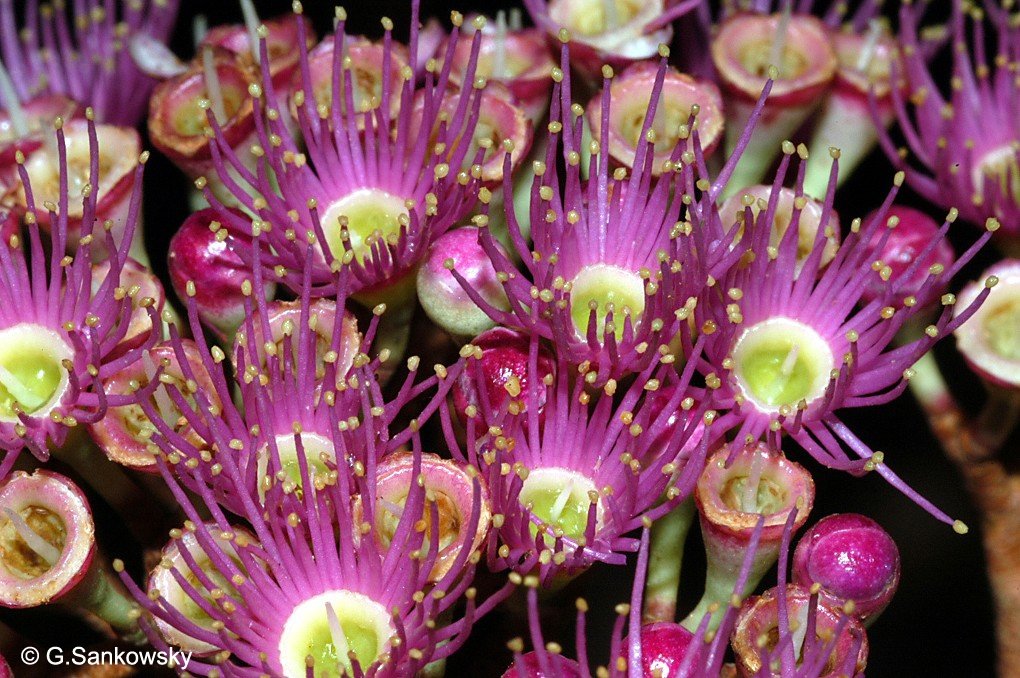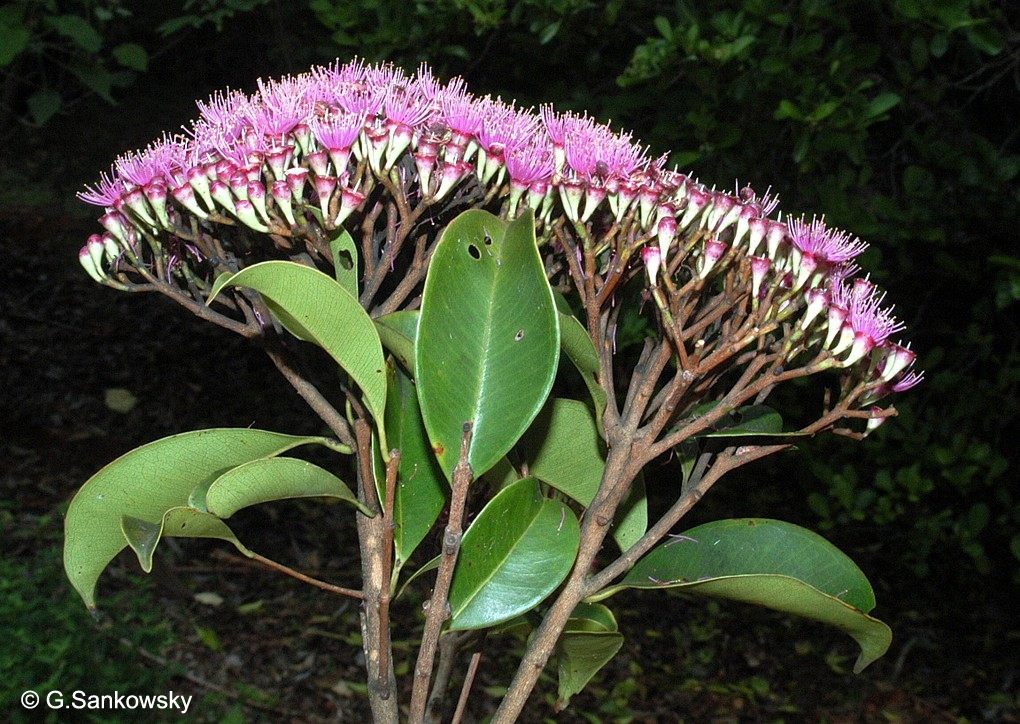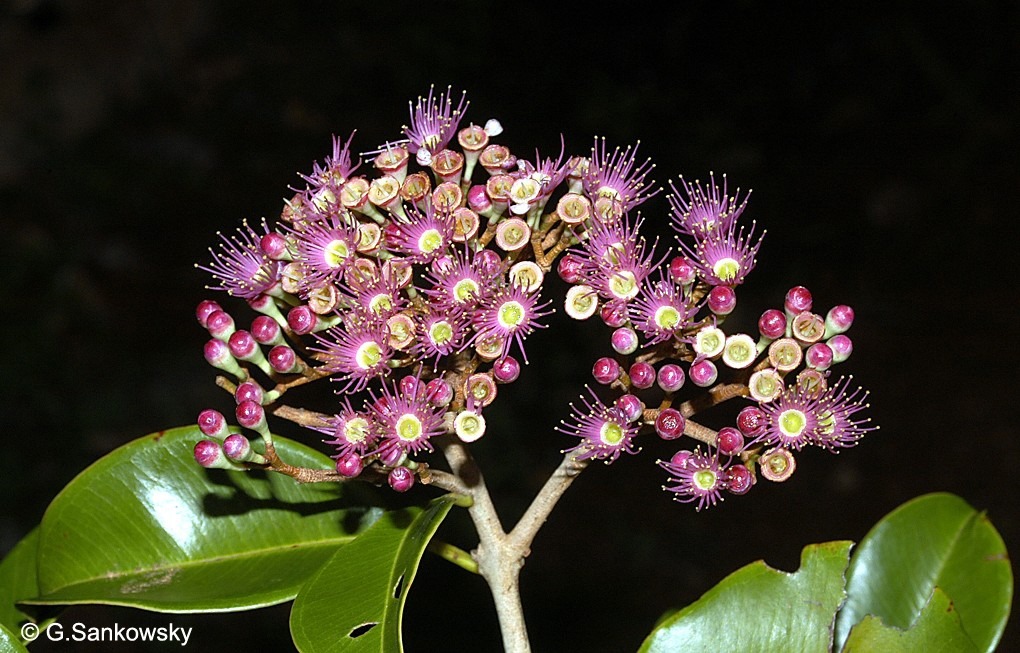Australian Tropical Rainforest Plants - Online edition
Syzygium buettnerianum (K.Schum.) Nied.







Niedenzu, F.J. (1893) Die Naturlichen Pflanzenfamilien 3(7): 85.
Watergum; Satinash, New Guinea; New Guinea Satinash
Bracts occasionally present at anthesis. Calyx tube (hypanthium) gradually tapering into a relatively stout pedicel, calyx tube (hypanthium) + pedicel about 4.5-6.5 mm long, calyx tube (hypanthium) about 3-3.5 mm diam., calyx tube (hypanthium) undulate at apex with rounded calyx lobes about 0.2-0.3 mm long. Petals variable in shape, +/- orbicular, cohering and shed together, each petal about 1.5-2.5 mm diam., oil dots visible, difficult to distinguish, up to 50 per petal, distributed over most of the petal except the margin. Outer staminal filaments about 3-5 mm long, anthers about 0.6 x 0.6 mm, gland dorsal, inconspicuous. Ovules about 12 per locule, placentas central, ovules radiating, ascending. Style about 2.5-4.5 mm long, slightly exceeding the calyx tube but well below the stamens.
Fruits subglobose or depressed globular, slightly compressed laterally, about 15-20 x 16-20 mm. Seed solitary, about 7-10 x 10-15 mm along the longer diameter, testa adhering slightly to the pericarp but free from the uniformly textured cotyledons. Radicle central.
Occurs in CYP. Altitudinal range from near sea level to 150 m. Grows in drier, more seasonal rain forest and gallery forest. Also occurs in New Guinea and the Solomon Islands.
This bushy tropical tree deserves introduction to cultivation. The flowers are bright pink and are produced in large terminal clusters.
This species is not utilized commercially in Australia but would probably provide a useful structural timber.
Wood specific gravity 0.90. Hyland (1983).





